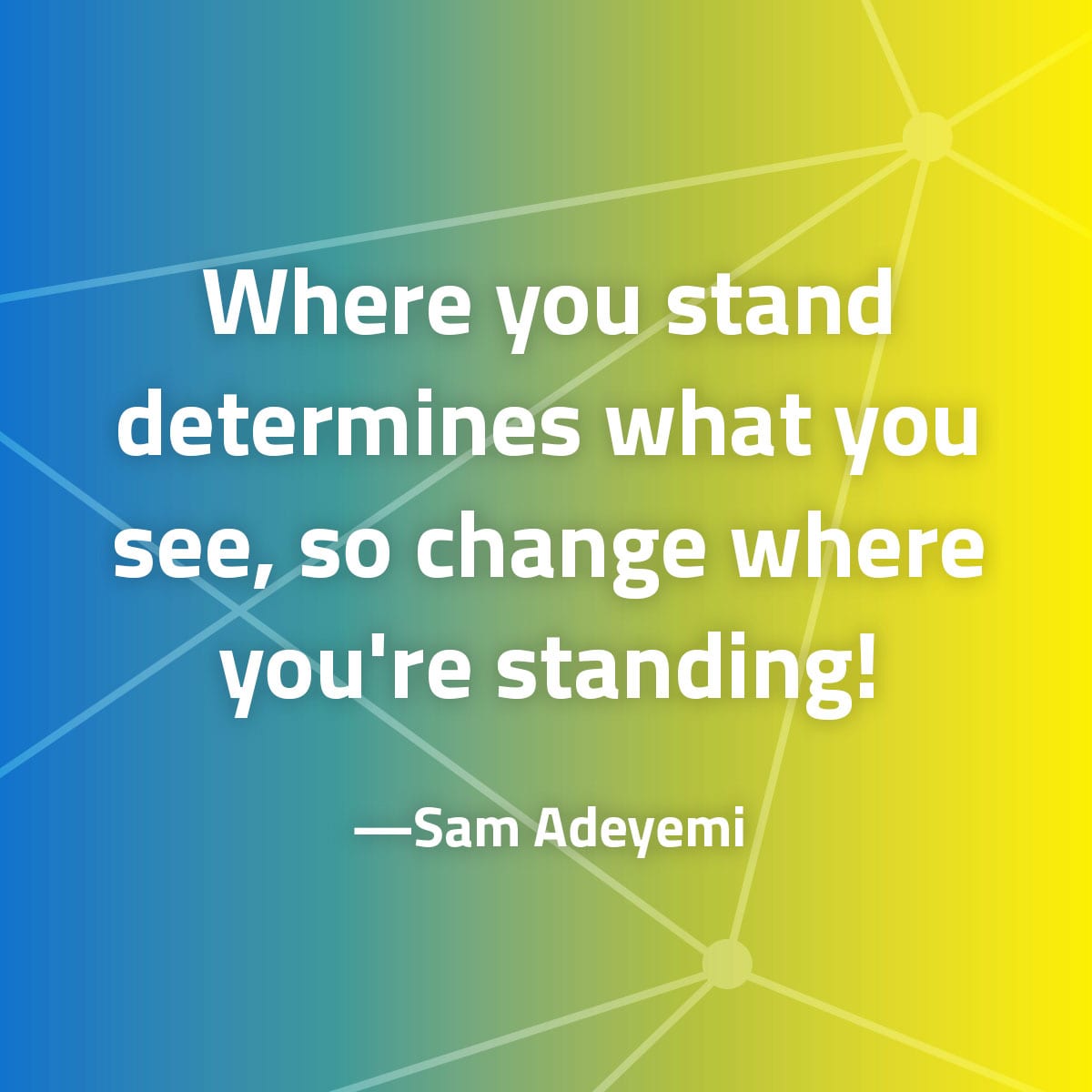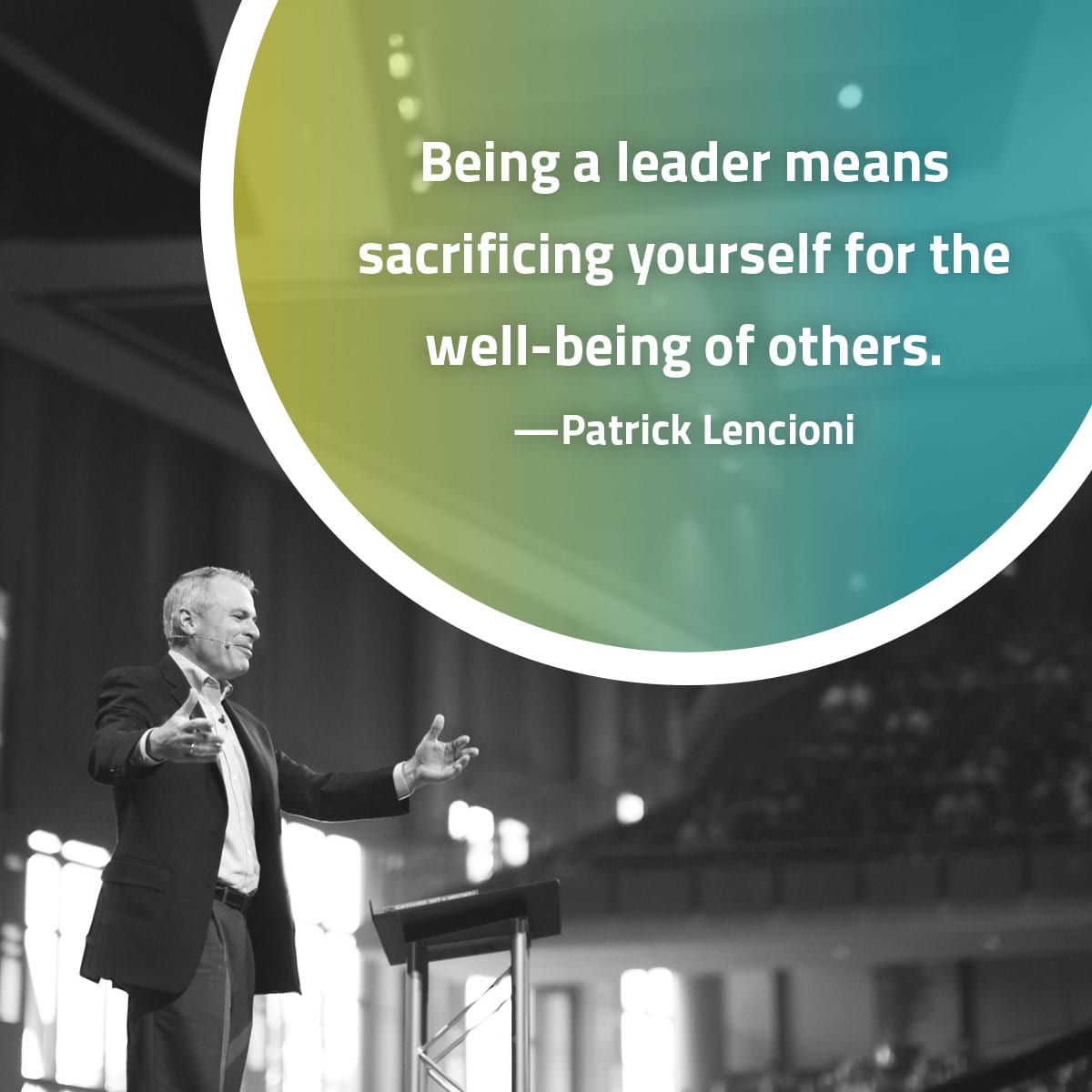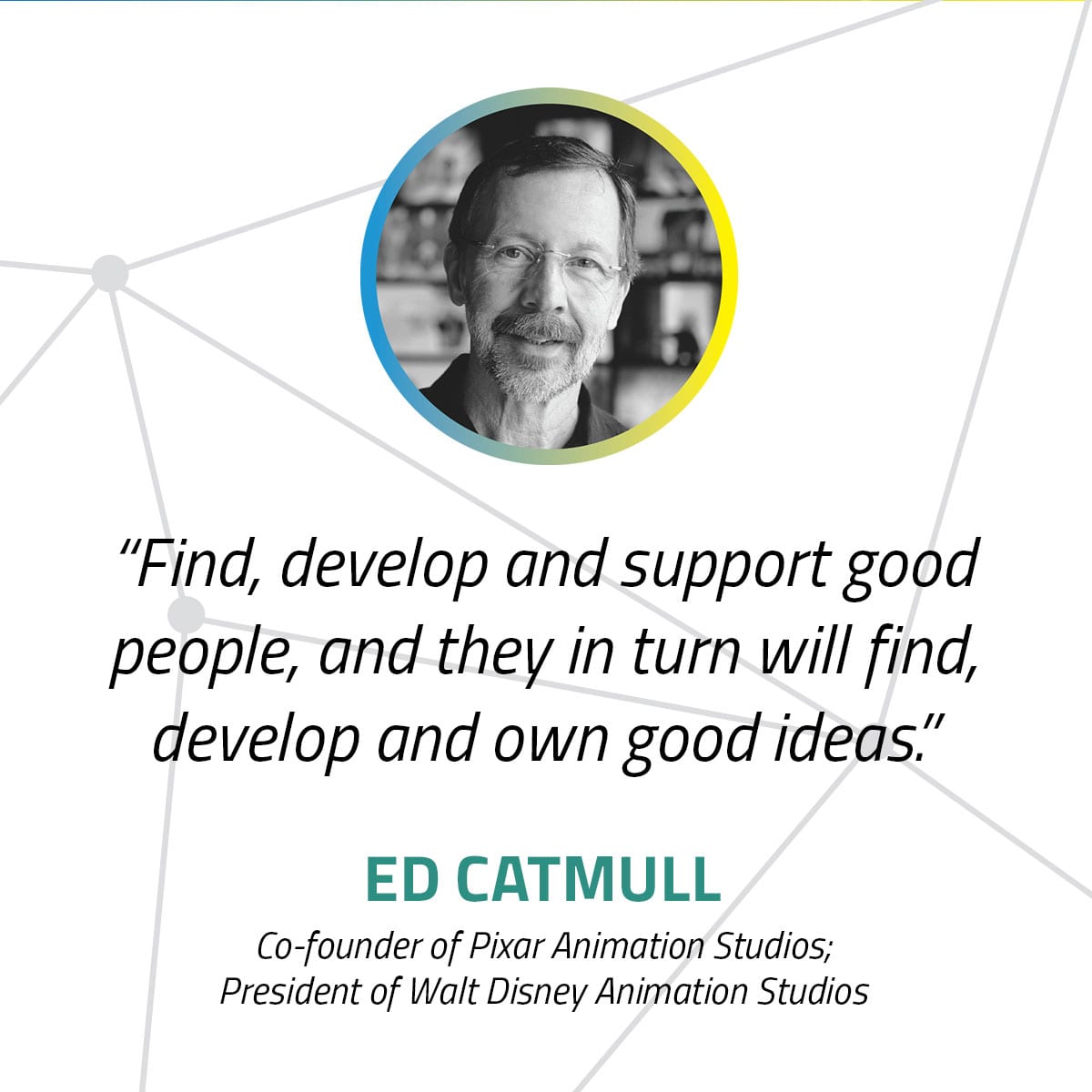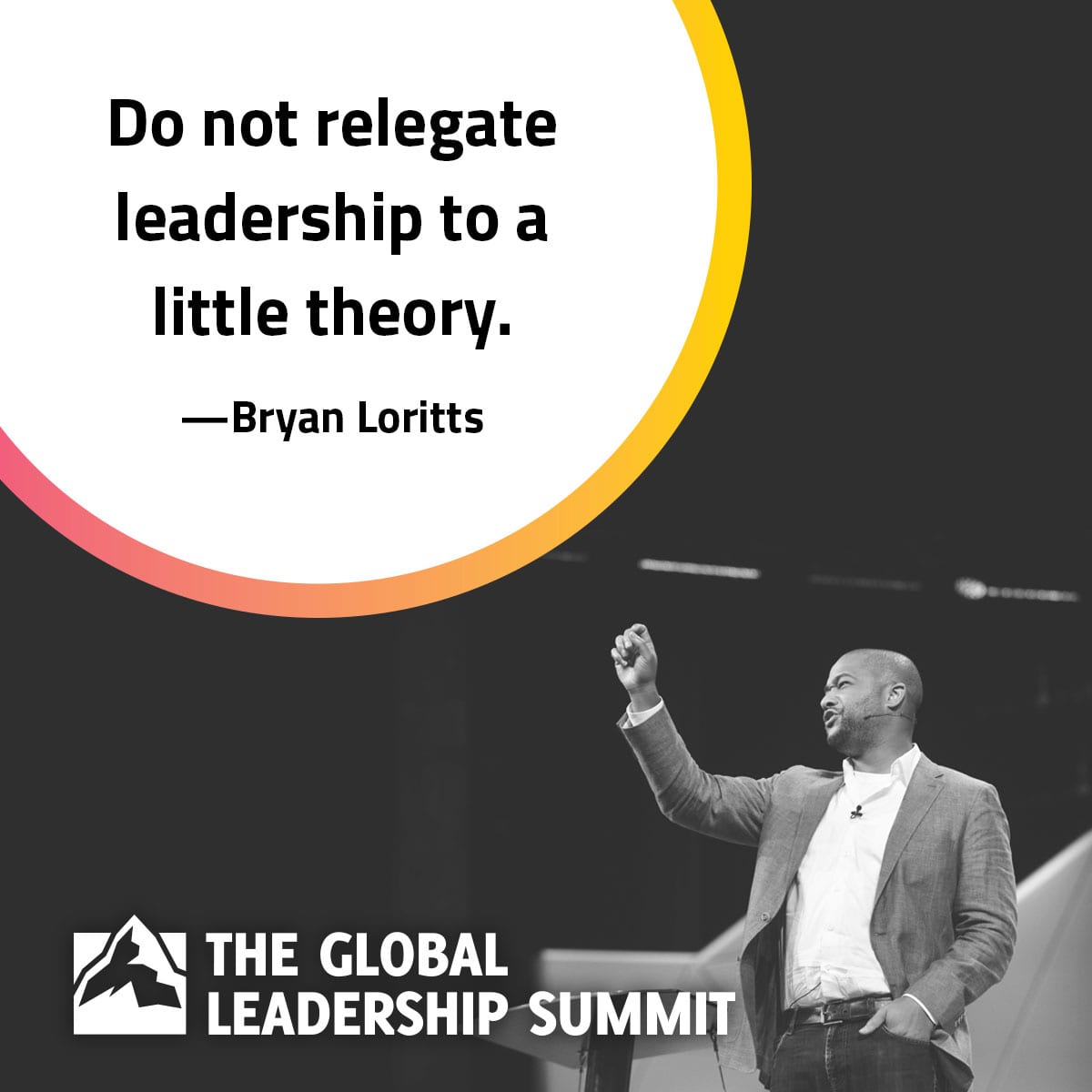
I measure success in what it has done for the people around me. That is the real accolade.

I measure success in what it has done for the people around me. That is the real accolade.

We are in love with the word Eureka, and for a good reason. Creativity is magic: it’s the ability to create something out of nothing, to make connections that others don’t see.
Everyone wants to work for, or invest in, the world’s most creative companies. Especially today. CEOs rank creativity as the most important leadership skill for successful organizations of the future, according to a survey last year by IBM’s Institute for Business Value. Innovation is everyone’s favorite buzzword.
Yet, a study conducted by the Wharton School of the University of Pennsylvania suggests that people who show true creativity—those whose ideas are not only useful but also original—are rarely seen as leaders. In the study, researchers asked employees at a multinational company in India to rate their colleagues’ creativity and leadership potential. They asked US college kids to do the same with their classmates. In both cases, the most creative people were not perceived as leaders.
Jennifer Mueller, assistant professor of management at Wharton and lead author of the study, speculates that out-of-the-box thinkers tend not to do the things that traditional leaders do: set goals, maintain the status quo, exude certainty. “I walk into a meeting and someone voices a creative idea,” she told CNN, “and someone else rolls their eyes and says, ‘that’s the creative over there.’ Yet if you were to say, ‘Do you want a creative leader?’ They would say, ‘Of course!’”
I suspect that another reason for the creativity gap in the leadership ranks is that many creative thinkers are introverts. Studies suggest that innovation often requires solitude and that the majority of spectacularly creative people across a range of fields are introverts, or at least comfortable with spending large chunks of time alone.
People who like to spend time alone are decidedly at odds with today’s team-based organizational culture. According to management research, introverts are much less likely than extroverts to be groomed for leadership positions even though another Wharton study led by Professor Adam Grant when managing proactive employees—precisely because they give them the freedom to dream up and implement new ideas.
In Drive, his fascinating book on motivation, Daniel Pink tells the story of one such CEO: William McKnight, 3M’s president and chairman during the 1930s and 1940s, “a fellow who was as unassuming in his manner as he was visionary in his thinking. McKnight believed in a simple, and at the time, subversive, credo: ‘Hire good people, and leave them alone.’”
McKnight put this into practice by allowing 3M’s technical staff to spend up to 15 percent of their time on projects of their choosing. And it paid off—one scientist dreamed up Post-it notes during his free time. What’s more, writes Pink, “most of the inventions that the company relies on even today emerged from those periods of…experimental doodling” (emphasis mine).
If we’re really serious about a future of innovation—if this isn’t just a feel-good buzzword—then we need to come up with, ahem, creative solutions to the mismatch between our perceptions of a leader and those of a creative person.
One idea is to consciously expand our notions of what a leader looks like.
Another is to think hard about what leaders really do. Today’s leaders need to perform traditional tasks such as making speeches, rallying troops and setting goals. But they also need to feel in their bones what innovation means.
If the same person can’t do all these things at once—and let’s face it: how many people are both social and solitary, goal-oriented and wildly original?—we should be thinking more about leadership-sharing, where two people divide leadership tasks according to their natural strengths and talents. One example of this model is introverted “product visionary” Mark Zuckerberg, CEO of Facebook, and the extroverted “people person” COO Sheryl Sandberg.

Depending on how we handle them, feelings can lead to great trouble.

 Joel Sikha’s passion for youth first developed when he was a young Christian in India. After dedicating his life to Jesus, he felt compelled to start making a difference in the lives of the youth in his country. One of his primary vehicles for serving youth was as a DJ with an Australian radio station. (NOTE: Joel’s voice was heard in all the 2015 Speaker intro videos!) Later he met his wife, who was from the US, and they moved to Boise, Idaho. He now serves as the youth pastor at Vineyard Christian Fellowship where he was introduced to the Global Leadership Summit.
Joel Sikha’s passion for youth first developed when he was a young Christian in India. After dedicating his life to Jesus, he felt compelled to start making a difference in the lives of the youth in his country. One of his primary vehicles for serving youth was as a DJ with an Australian radio station. (NOTE: Joel’s voice was heard in all the 2015 Speaker intro videos!) Later he met his wife, who was from the US, and they moved to Boise, Idaho. He now serves as the youth pastor at Vineyard Christian Fellowship where he was introduced to the Global Leadership Summit.
The Summit’s impact on his view of youth and young leaders has strengthened his ministry for the better. When Joel heard the concept about never doing ministry alone, and always having a budding leader with you, he grasped the idea, and went into action.
Joel started looking at youth more as partners in ministry. “I started doing ministry with a bunch of young, enthusiastic and passionate guys and girls, and the more I started doing ministry with them the more I felt like they were growing and I was growing, too,” Joel explains. “Young leaders need a little nudge, but once they get moving, there is no stopping them. I learned a lot from them and they from me.”
It wasn’t an easy start. Joel wanted to see the youth empowered to lead, but that also meant he needed to let go. “Yes, it was hard, and sometimes it still is,” he said. “Especially when it comes to teaching and preaching, but if they are not given a chance, they will never grow. I have been on the other side of not having a chance, and it sucks.”
“My dream is to make disciples of Jesus Christ by enabling them to see themselves as world changers, and equipping them to change the world by teaching them from the Word.”
Today, Joel has a team of 17 young leaders who can run his Sunday service even if he’s not there. This has freed him up to attend conferences, spend time building into young leaders, and work on his own leadership development. “In the long run, I am at peace knowing that the person who can continue the ministry is being taught and groomed even now. My team of leaders can successfully run the youth ministry without me. They organize services, get the worship team together, and teach and lead small groups. I am actually going on a 12-day vacation this summer and have full trust in my leaders.”
A leader can’t function alone. The benefit of empowering young leaders around you might also mean you can take a vacation! Joel encourages leaders to learn from other leaders from different backgrounds and ages. “If you really want to lead, you have to open yourself to learning from other leaders. And the Summit is a GREAT place to do that—both in the ministry and in business.”

Where you stand determines what you see, so change where you’re standing!

Being a leader means sacrificing yourself for the well-being of others.

The best leaders love growth – they want to grow their organizations, their people and their influence. One of the keys that enables this growth is the leader’s ability to create capacity.
How do leaders increase their personal and organizational capacity? Here’s a partial list…
Increase efficiency – Find ways to do what you’re currently doing better. Eliminate steps, minimize approvals and create ways to do more with less. You may want to map your key processes looking for efficiencies along the way.
Increase effectiveness – Be careful not to confuse efficiency with effectiveness; they are fundamentally different. Efficiency is concerned with speed, quality and cost; while effectiveness answers a different question: What should we be doing in the first place? Work on the right things.
Get smarter – This shows up in many ways. It contributes to the two previous ideas directly. Learn from your successes and your failures. Always reserve the right to get smarter. When you do, act on what you’ve learned.
Learn from others – Whatever you’re trying to do, chances are extremely high that, not only has someone done if before, there are probably people and organizations that excel at whatever you’re facing. Don’t let your ego and pride sabotage your success.
Eliminate activities – When we stop doing activities with little or diminished value, we increase our personal and organizational capacity. I wrote a post on this a few years ago: Today’s Challenge: What Should I STOP Doing?
Delegate responsibilities – Leaders who delegate well increase their personal capacity by eliminating activities from their own to do list. Delegation can also help other people grow. As they take on more work, they will be faced with the challenge of expanding their own capacity.
Utilize people outside your organization – This one is tricky. In our current economic reality, this may not always be an option. However, it is a tremendous strategy when you can find the resources. You don’t always try to add full time people to support a project or fulfill a request. I’ll write more about that in the future.
Leaders who demonstrate the ability to expand their personal and organizational capacity are the men and women who tend to get more responsibility… and recognition… and opportunity… and rewards.

Find, develop and support good people, and they in turn will find, develop and own good ideas.

Do not relegate leadership to a little theory.

 “It was my third time attending the Global Leadership Summit in Pakistan. A former friend of mine, and local leader in the community was also there. We were not in a good relationship. We hadn’t talked in two years! We had hit a dead end.
“It was my third time attending the Global Leadership Summit in Pakistan. A former friend of mine, and local leader in the community was also there. We were not in a good relationship. We hadn’t talked in two years! We had hit a dead end.
When the speaker started talking, I felt like the only person in the room, like he was talking only to me! It broke my heart, and moved me to action. At the end of the session, I built up the courage to ask my friend for forgiveness in public. To my surprise, he was also moved to do the same. Then here we were in public, hugging each other, and asking for forgiveness with tears in our eyes.
We prayed for each other, and the wall between us fell down. The yoke and the burden of un-forgiveness were broken.
I’m thankful for the Global Leadership Summit spreading the fragrance of love and forgiveness. We are at peace now.”
– Anonymous Senior Leader in Pakistan
“We welcome and encourage comments on this site. There may be some instances where comments will need to be edited or removed, such as:
If you have any questions on the commenting policy, please let us know at heretoserve@globalleadership.org”
Recent Comments